It looks like you're using an Ad Blocker.
Please white-list or disable AboveTopSecret.com in your ad-blocking tool.
Thank you.
Some features of ATS will be disabled while you continue to use an ad-blocker.
share:
originally posted by: Wifibrains
originally posted by: Logarock
originally posted by: Wifibrains
a reply to: zardust
Those mysteries, the symbols that are universal to mankind are built into the fabric of our consciousness. These archetypes are given and built into the system for one reason. They are a map to the way home.
That is what I'm talking about, and confirms personal experience I hope to one day find the words to explain without sounding bat# crazy.
When i put it into words it sounds like scifi spiritual mumbo jumbo hard to believe, you just made that up bull#... I got the Ezekiel effect. 24hrs on the throne. The snake lady was a gatekeeper.
What is built into the consciousness of man collectively are certain capacities that are easily manipulated. These archetypes most often are presented in the abstract and are designed to be flexible because their nature is to delude the mind. That's why one can find 20 different names for the same archetype and many different attributes ascribed. And yes, back in time, some group of very intelligent but manipulative and deceitful people who understood mankind to be like stupid children, took advantage of this weakness, if you will, in man and drew up the "mysteries" as they are known.
Your opinion directly opposes experience so we will have to agree to disagree on that.
When the archetypes reveal themselves as thought forms in the psyche and are explained by myth and legend ect, then modern western social engineering lumps these experiences as psychotic malfunction it could just as easily be said that the mind is being manipulated to shut them out, it is much more plausible to me that this is what has happened, kept an a straight and narrow path of understanding creates the mysteries to be solved showing the path.
Yes we will certainly disagree here.
originally posted by: urbanghost
There is a book about the Picts called Picts and Ancient Britons. It suggests that the Picts were not celts but Scythians and were Finno-Ugrian immigrants from the Baltic Coast. Not sure if you know about it or have read it?
It's certainly one of the theories we touched on in the thread yes.
a reply to: Wifibrains
Right, that is a possibility. Comb hypothesis - belief in afterlife.
I'm going to check all the stones with a comb and see if they have commonalities ie are they tombstones?
Right, that is a possibility. Comb hypothesis - belief in afterlife.
I'm going to check all the stones with a comb and see if they have commonalities ie are they tombstones?
a reply to: beansidhe
Is there a single place to view all these stones you're discussing, also divided into symbols, and other common features, along with dating (obviously contentious)?
This thread is Suuuuper long, for posteriority and those of us with not enough time to read all 55 pages, an index of some sort at the beginning of the thread would be cool, assuming a mod would allow it. Or is there a webpage with that sort of info?
You might glean some information from looking at them from a whole perspective.
Just some thoughts.
Is there a single place to view all these stones you're discussing, also divided into symbols, and other common features, along with dating (obviously contentious)?
This thread is Suuuuper long, for posteriority and those of us with not enough time to read all 55 pages, an index of some sort at the beginning of the thread would be cool, assuming a mod would allow it. Or is there a webpage with that sort of info?
You might glean some information from looking at them from a whole perspective.
Just some thoughts.
a reply to: zardust
Hi there, yes on the first page there are some links, but since I'm looking at one of the sites as we speak, I'll stick it here too. It's the best one in my opinion, since you can search under symbols, stone name, class or area
STAMS site
Hi there, yes on the first page there are some links, but since I'm looking at one of the sites as we speak, I'll stick it here too. It's the best one in my opinion, since you can search under symbols, stone name, class or area
STAMS site
Of the 45 stones with combs, only a handful have actual 'combs' (some have what look like boxes, as in the 'Hecate' cartouche), and many are just
fragments of the original, making it impossible to see what was alongside them. Here's the best of the handful:
Notice the strange Z-rod and discs -the first time I've been reminded of a swastika:
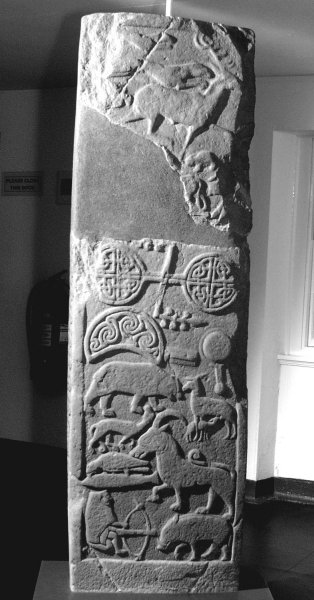
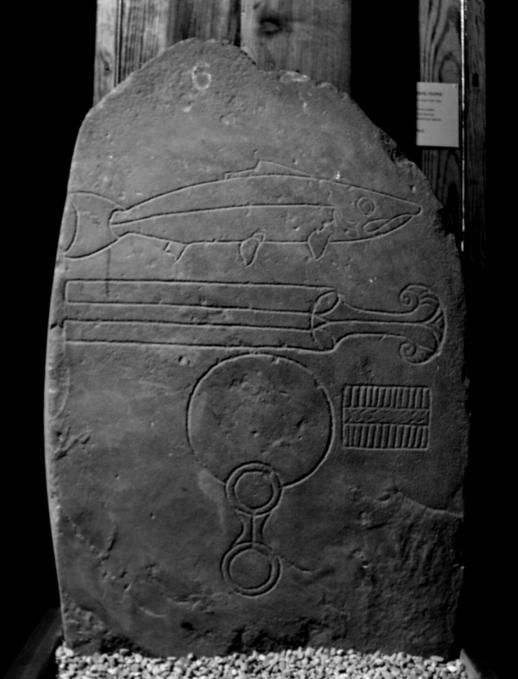
Notice the back-to-back crescents below, the first time I've seen this symbol.
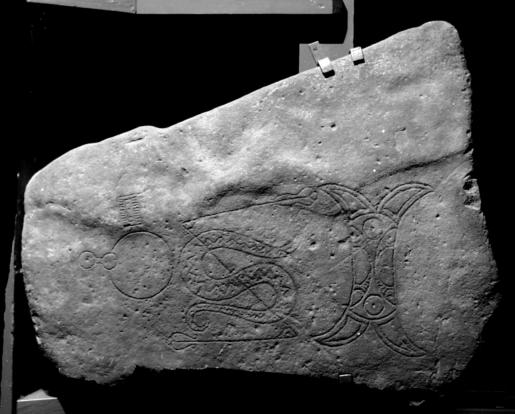
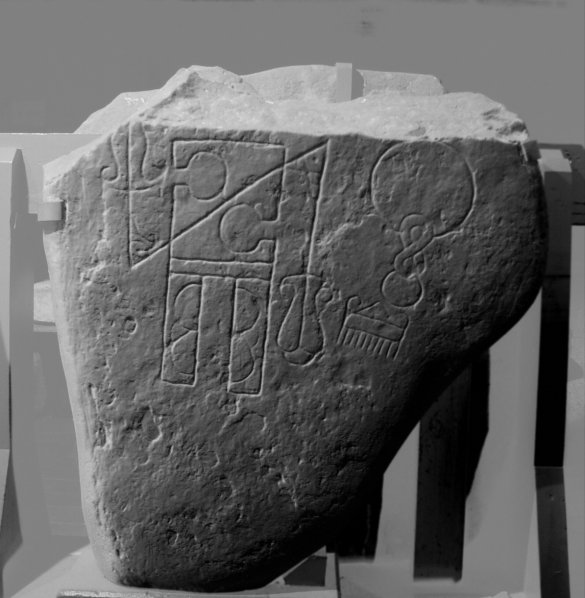
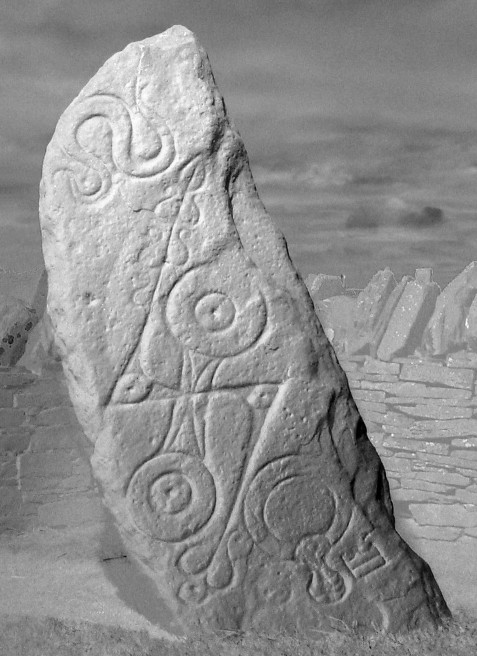
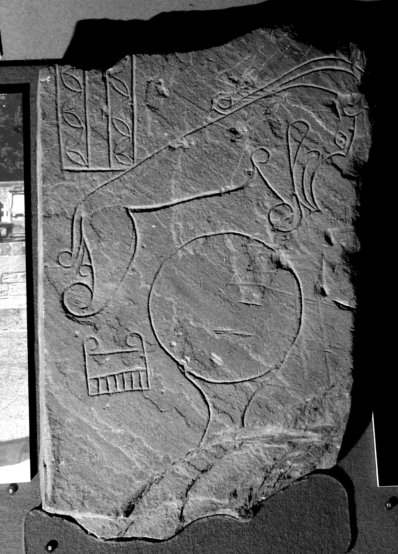
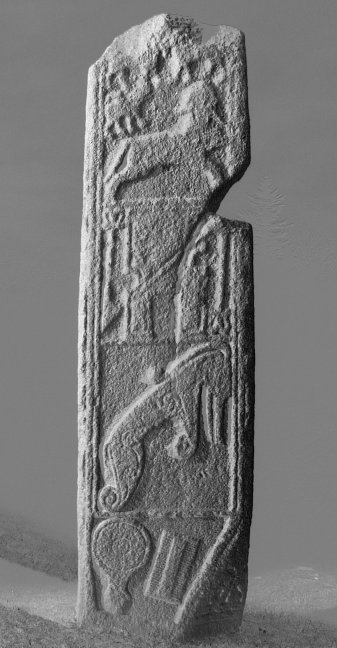
Notice the strange Z-rod and discs -the first time I've been reminded of a swastika:


Notice the back-to-back crescents below, the first time I've seen this symbol.





originally posted by: beansidhe
Notice the strange Z-rod and discs -the first time I've been reminded of a swastika:
This stone is very interesting. Notice the person at the bottom with the bow. The earliest recorded use of a bow in Britain was in Wales in 633AD. The son of the king of Northumbria was killed by an arrow shot by a Welshman. There is no record of the opposing army having bows. This leads me to believe that the bow was not in use north of Wales at that time. Even the North Welsh didn't have a history of the bow only the South Welsh.
edit on 27-4-2014 by urbanghost because: (no reason given)
a reply to: urbanghost
Aah, I didn't know that, thank you.
The above is the Drosten Stone, from Arbroath also known as one of the St. Vigeans' Stones.
There's writing on the stone, maybe gaelic, dating the stone to the late 9th c.
Notice he's shooting a boar - whether it's a nod to Twrth Trwyth or whether it's to demonstrate his bravery (boars being synonymous with battle and war) is not clear. But there's also a unicorn, I think, and if so, that's the only unicorn on a Pict stone.
Just need to have a quick check on unicorn legends (Scotland's national animal) now
eta - this may discredit the astrology theory of animals, as boar was thought to represent a constellation - worth holding in mind.
Aah, I didn't know that, thank you.
The above is the Drosten Stone, from Arbroath also known as one of the St. Vigeans' Stones.
There's writing on the stone, maybe gaelic, dating the stone to the late 9th c.
Notice he's shooting a boar - whether it's a nod to Twrth Trwyth or whether it's to demonstrate his bravery (boars being synonymous with battle and war) is not clear. But there's also a unicorn, I think, and if so, that's the only unicorn on a Pict stone.
Just need to have a quick check on unicorn legends (Scotland's national animal) now
eta - this may discredit the astrology theory of animals, as boar was thought to represent a constellation - worth holding in mind.
edit on 27-4-2014 by beansidhe because: eta
edit on 27-4-2014 by beansidhe because: (no reason given)
a reply to: beansidhe
Wasn't that "Bow" described as a crossbow??
The hand of the archer is holding the thick (heavy?) centre piece of the bow...?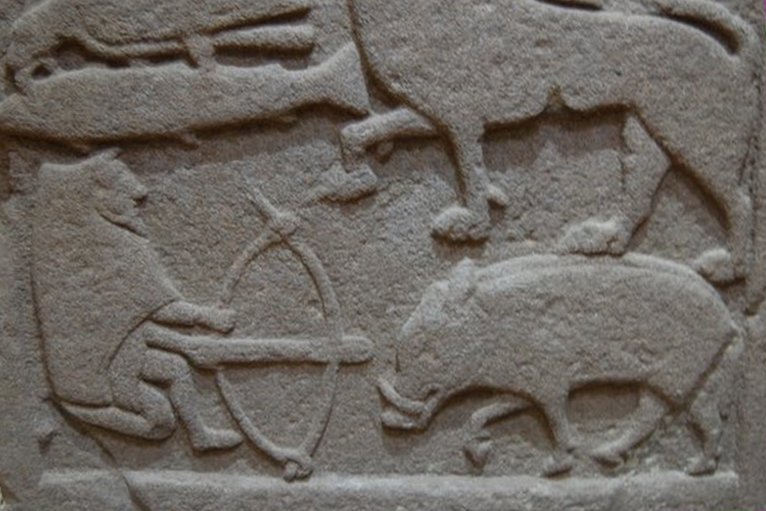
Weren't crossbows invented much later???
< ---Confused!
Wasn't that "Bow" described as a crossbow??
The hand of the archer is holding the thick (heavy?) centre piece of the bow...?

Weren't crossbows invented much later???
< ---Confused!
edit on 27-4-2014 by Gordi The Drummer because: of adding a photo
a reply to: Gordi The Drummer
They were not:
Crossbows
Well spotted, I don't really know the difference between bows. There's a 200+ year gap, since bows were said to be used in Britain - but worth checking some sources to see whether the Picts were known to use crossbows, or in other words if that is a Pict being depicted, or not.
They were not:
The earliest evidence for the crossbow in Europe dates back to the 5th century BC when the gastraphetes, an ancient Greek crossbow type, appeared. The device was described by the Greek author Heron of Alexandria in his work Belopoeica ("On Catapult-making"), which draws on an earlier account of his famous compatriot engineer Ctesibius (fl. 285–222 BC). Heron identifies the gastraphetes as the forerunner of the later catapult, which places its invention some unknown time prior to 420 BC.[1]
The gastraphetes was a large artillery crossbow mounted on a heavy stock with a lower and upper section, the lower being the case fixed to the bow and the upper being the slider which had the same dimensions as the case.[2] Meaning "belly-bow",[2] it was called as such because the concave withdrawal rest at one end of the stock was placed against the stomach of the operator, which he could press to withdraw the slider before attaching a string to the trigger and loading the bolt; this could thus store more energy than regular Greek bows.[3] It was used in the Siege of Motya in 397 BC. This was a key Carthaginian stronghold in Sicily, as described in the 1st century AD by Heron of Alexandria in his book Belopoeica.[4] Alexander's siege of Tyre in 332 BC provides reliable sources for the use of these weapons by the Greek besiegers.[5]
Crossbows
Well spotted, I don't really know the difference between bows. There's a 200+ year gap, since bows were said to be used in Britain - but worth checking some sources to see whether the Picts were known to use crossbows, or in other words if that is a Pict being depicted, or not.
edit on
27-4-2014 by beansidhe because: (no reason given)
originally posted by: beansidhe
...Well spotted, I don't really know the difference between bows. There's a 200+ year gap, since bows were said to be used in Britain - but worth checking some sources to see whether the Picts were known to use crossbows, or in other words if that is a Pict being depicted, or not.
A "Bow" is a single (or composite) piece of "springy" wood or wood-horn laminate (or modern carbon fibre etc) with a string, which when drawn back, puts tension in the bow section, thus storing energy which can be used to launch an arrow. The archer puts one hand firmly on the springy bow section and uses the other hand to "draw back" the string.
A ""Crossbow" is a springy section of wood / laminate (or metal - like a leaf-spring?), permanently mounted on a heavy wooden Stock in a "cross" shape. The stock would usually contain a trigger mechanism for releasing the string to launch the arrow (or bolt) and some had a form of ratchet for pulling the string back - giving the opportunity to put more stored energy into the bow and therefore have higher power available to launch. The archer would hold the Stock section (not the springy bow part), usually with both hands, one to support and aim, and the other to release the trigger.
a reply to: beansidhe
Hi Beans,
According to the wiki article on Crossbows (I know! LOL)
LINK TO WIKI PAGE
St.Vigeans No.1 we've already looked at?
I Haven't found the Glenferness one yet...
The relevant panel on the Shandwick one looks like this: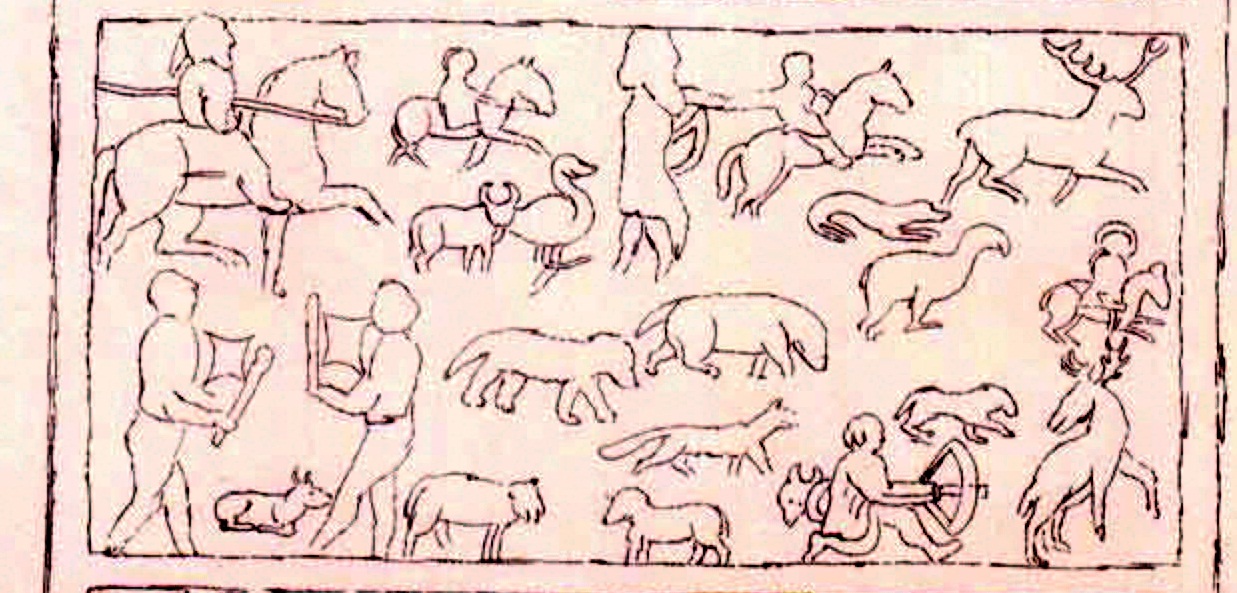
and I haven't nailed down which Meigle stone they are referring to yet? (Could have been one that was lost in the church fire?)
Anyway, It is thought that the crossbow was invented in ancient China, but guess who else had them from the 5th century BC?
Yep, our friends the ancient Greeks!
Here is a reproduction of their "Gastraphetes" crossbow: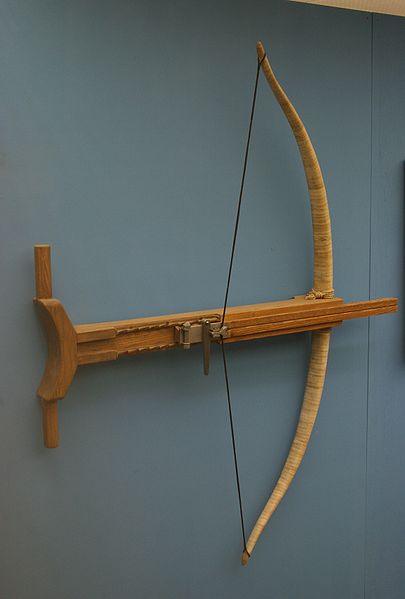
Quite similar to those depicted on the Pictish stones I think?
Especially with the thick/heavy piece (of the stock) which seems to hold the projectile in place, sticking out the front of the bow?
G
Hi Beans,
According to the wiki article on Crossbows (I know! LOL)
The crossbow is portrayed as a hunting weapon on four Pictish stones from early medieval Scotland (6th to 9th centuries): St. Vigeans no. 1, Glenferness, Shandwick, and Meigle
LINK TO WIKI PAGE
St.Vigeans No.1 we've already looked at?
I Haven't found the Glenferness one yet...
The relevant panel on the Shandwick one looks like this:

and I haven't nailed down which Meigle stone they are referring to yet? (Could have been one that was lost in the church fire?)
Anyway, It is thought that the crossbow was invented in ancient China, but guess who else had them from the 5th century BC?
Yep, our friends the ancient Greeks!
Here is a reproduction of their "Gastraphetes" crossbow:

Quite similar to those depicted on the Pictish stones I think?
Especially with the thick/heavy piece (of the stock) which seems to hold the projectile in place, sticking out the front of the bow?
G
a reply to: Gordi The Drummer
Yes, I think someone mentioned that a moment ago lol!
Good find with the crossbow, though. It looks like a good match to me.
Here's the Glenferness stone (the Princess Stone):
courtesy of the Megalithic Portal
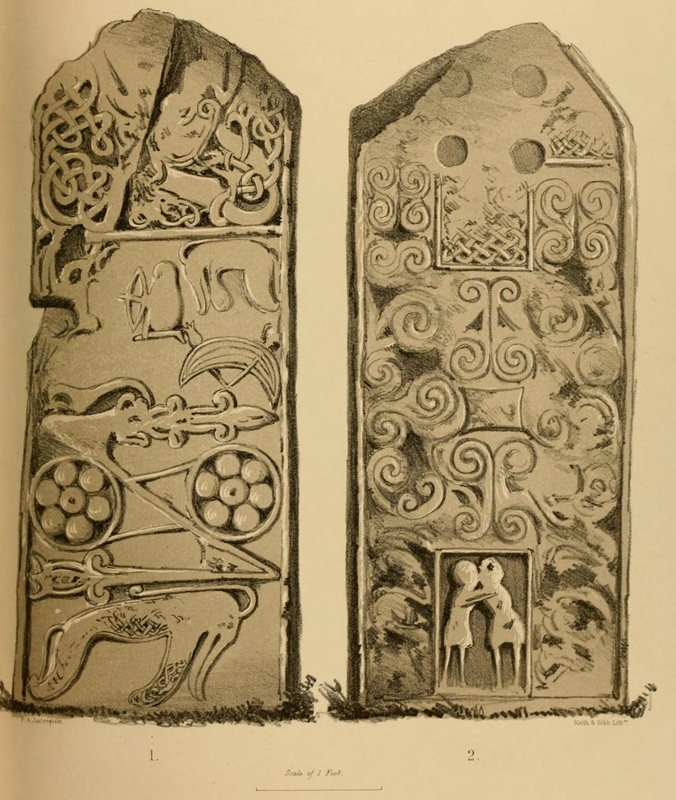
Give me a minute to find the Meigle one, and then I've got another weapony surprise...
ETA: No, not on any Meigle ones I can see
Yes, I think someone mentioned that a moment ago lol!
Good find with the crossbow, though. It looks like a good match to me.
Here's the Glenferness stone (the Princess Stone):
courtesy of the Megalithic Portal

Give me a minute to find the Meigle one, and then I've got another weapony surprise...
ETA: No, not on any Meigle ones I can see
edit on 28-4-2014 by beansidhe because: eta
But first a weapon question - what is the shaped 'stick' in the centaur's hands, also seen in the man's hand?
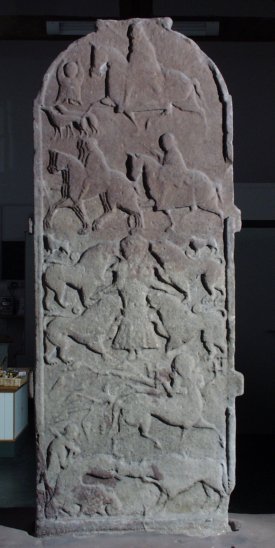
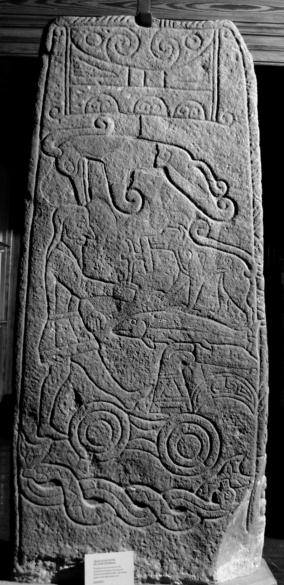


Whilst looking for at longbows, I found this site: Scottish Weapons

It made me think of this:
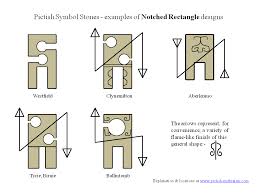
Maybe
There are few surviving Pictish relics but rare images from the period such as the Sarcophagus found in St Andrews in 1833 and the Book of Kells give an insight into the weapons of the Picts. The H-Shield is a distinctive shape associated with the Picts, though small, handheld shields of round and square shapes are also in evidence.
The H-Shaped shield is light and compact with a central punch grip. The wooden construction is covered with leather and stained with symbolic figures. A bound wooden frame creates the H-Shape. The central boss of beaten iron encloses the grip hole and is raised to protect the hand.

It made me think of this:

Maybe
a reply to: beansidhe
hmm, not sure.
I'm seeing his hand, holding an object with a handle which has a cross-spar guard (like you see on a sword grip), then a long thin length of the "object" The far end of which has another cross-like joint?
The right hand arm of the cross has a larger rectangular? piece on it... like a simple Axe maybe?
Don't know why there would be a cross-spar at the hand grip end of an axe though?? Never seen that before.
PS - On the idea of shields... The "notches" in the notched rectangles remind me of some of the ancient greek? shields. (Not sure which race/group)
I think that they used to rest their spears in the notch, and form up in battle formation, with spears protruding whilst still fully protected by the surrounding shields?
PPS- Here's a Persian one...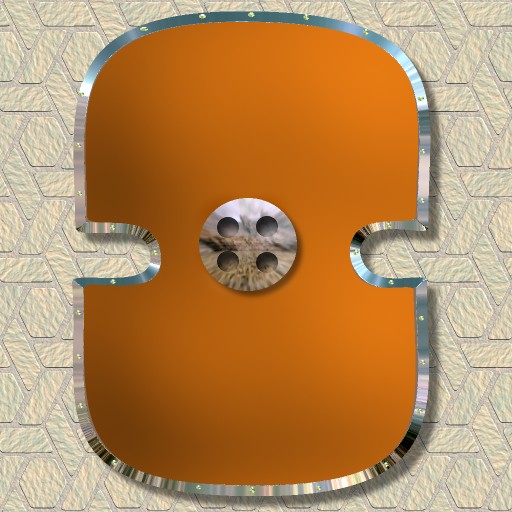
hmm, not sure.
I'm seeing his hand, holding an object with a handle which has a cross-spar guard (like you see on a sword grip), then a long thin length of the "object" The far end of which has another cross-like joint?
The right hand arm of the cross has a larger rectangular? piece on it... like a simple Axe maybe?
Don't know why there would be a cross-spar at the hand grip end of an axe though?? Never seen that before.

PS - On the idea of shields... The "notches" in the notched rectangles remind me of some of the ancient greek? shields. (Not sure which race/group)
I think that they used to rest their spears in the notch, and form up in battle formation, with spears protruding whilst still fully protected by the surrounding shields?
PPS- Here's a Persian one...

edit on 28-4-2014 by Gordi The Drummer because: PS
a reply to: beansidhe
Can't believe I didn't remember this right away. In the Mabinogion it says that the Twrch Trwyth carried between its ears a comb, a razor and a pair of shears. Not sure if that has anything to do with the combs?
Notice he's shooting a boar - whether it's a nod to Twrth Trwyth
Can't believe I didn't remember this right away. In the Mabinogion it says that the Twrch Trwyth carried between its ears a comb, a razor and a pair of shears. Not sure if that has anything to do with the combs?
the strange disc carvings look a bit like the two halves of this mould when put side by side. It is iron age and was found just down the road from
where I live.
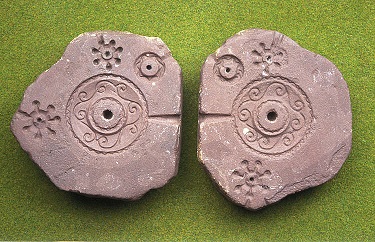
Maybe this discs are a representation of this? Something forgotten over time but remembered as a distant memory. I'm sure the process of making and using these moulds was originally thought as mystical.

Maybe this discs are a representation of this? Something forgotten over time but remembered as a distant memory. I'm sure the process of making and using these moulds was originally thought as mystical.
new topics
-
Is the origin for the Eye of Horus the pineal gland?
General Conspiracies: 40 minutes ago -
Man sets himself on fire outside Donald Trump trial
Mainstream News: 51 minutes ago -
Biden says little kids flip him the bird all the time.
2024 Elections: 57 minutes ago -
The Democrats Take Control the House - Look what happened while you were sleeping
US Political Madness: 1 hours ago -
Sheetz facing racial discrimination lawsuit for considering criminal history in hiring
Social Issues and Civil Unrest: 1 hours ago -
In an Historic First, In N Out Burger Permanently Closes a Location
Mainstream News: 3 hours ago -
MH370 Again....
Disaster Conspiracies: 4 hours ago -
Are you ready for the return of Jesus Christ? Have you been cleansed by His blood?
Religion, Faith, And Theology: 6 hours ago -
Chronological time line of open source information
History: 7 hours ago -
A man of the people
Diseases and Pandemics: 8 hours ago
top topics
-
Israeli Missile Strikes in Iran, Explosions in Syria + Iraq
World War Three: 17 hours ago, 19 flags -
In an Historic First, In N Out Burger Permanently Closes a Location
Mainstream News: 3 hours ago, 14 flags -
Thousands Of Young Ukrainian Men Trying To Flee The Country To Avoid Conscription And The War
Other Current Events: 14 hours ago, 7 flags -
The Democrats Take Control the House - Look what happened while you were sleeping
US Political Madness: 1 hours ago, 7 flags -
Iran launches Retalliation Strike 4.18.24
World War Three: 17 hours ago, 6 flags -
12 jurors selected in Trump criminal trial
US Political Madness: 16 hours ago, 4 flags -
4 plans of US elites to defeat Russia
New World Order: 10 hours ago, 4 flags -
A man of the people
Diseases and Pandemics: 8 hours ago, 4 flags -
Man sets himself on fire outside Donald Trump trial
Mainstream News: 51 minutes ago, 4 flags -
Biden says little kids flip him the bird all the time.
2024 Elections: 57 minutes ago, 3 flags
active topics
-
Man sets himself on fire outside Donald Trump trial
Mainstream News • 8 • : BernnieJGato -
12 jurors selected in Trump criminal trial
US Political Madness • 73 • : ImagoDei -
The Democrats Take Control the House - Look what happened while you were sleeping
US Political Madness • 15 • : matafuchs -
Are you ready for the return of Jesus Christ? Have you been cleansed by His blood?
Religion, Faith, And Theology • 17 • : TheValeyard -
Israeli Missile Strikes in Iran, Explosions in Syria + Iraq
World War Three • 100 • : Astrocometus -
Silent Moments --In Memory of Beloved Member TDDA
Short Stories • 45 • : Naftalin -
Biden says little kids flip him the bird all the time.
2024 Elections • 5 • : TheValeyard -
President BIDEN Warned IRAN Not to Attack ISRAEL - Iran Responded with a Military Attack on Israel.
World War Three • 46 • : ImagoDei -
Thousands Of Young Ukrainian Men Trying To Flee The Country To Avoid Conscription And The War
Other Current Events • 24 • : DerBeobachter2 -
"We're All Hamas" Heard at Columbia University Protests
Social Issues and Civil Unrest • 131 • : marg6043

